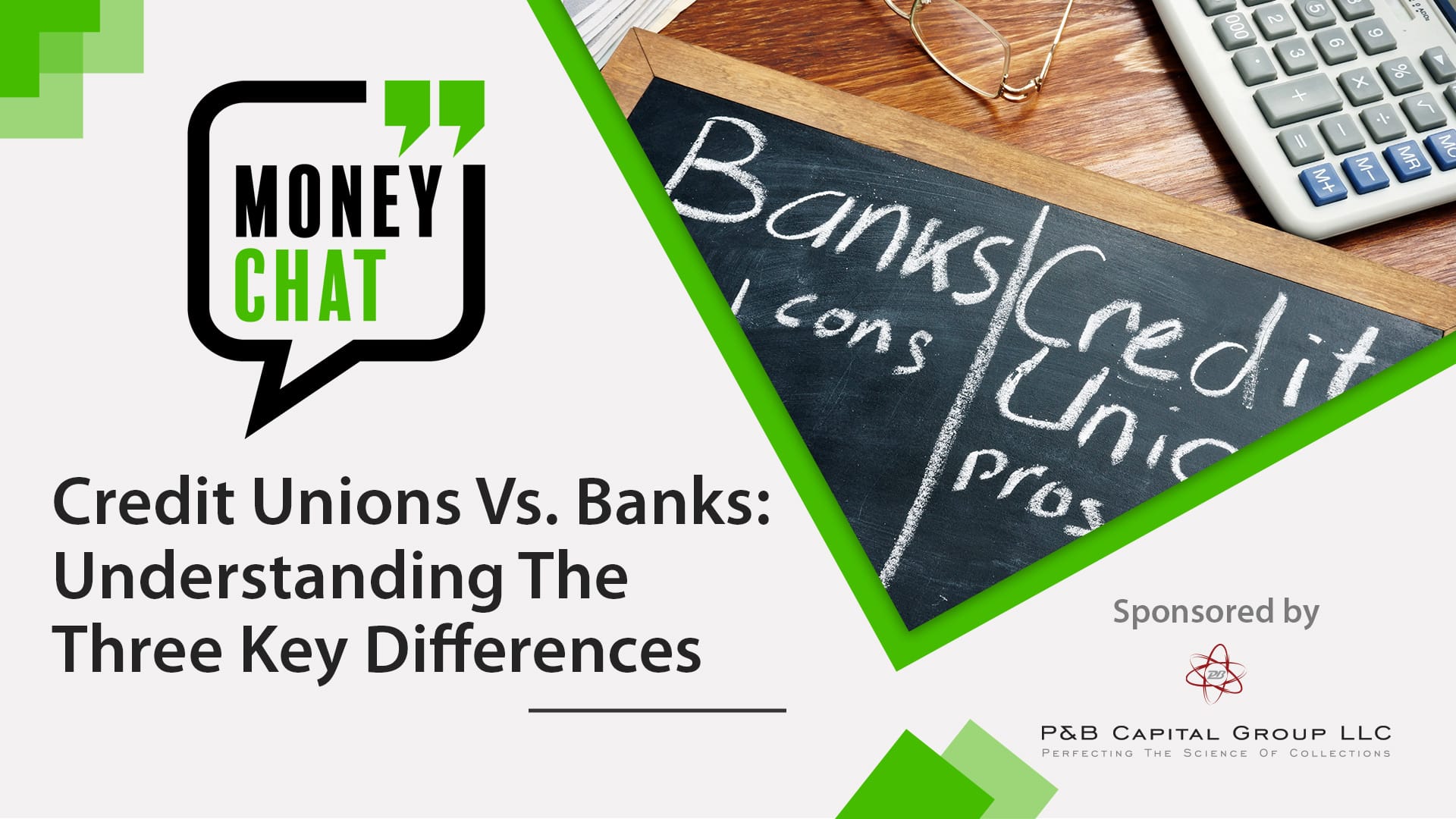
Credit Unions Vs. Banks: Understanding The Three Key Differences
When it comes to managing your finances at established banking institutions, you have a choice between traditional national banks—like Chase and Bank of America—and your local credit unions. While both offer similar services, there are significant differences between them that impact how your money is managed, made available, and utilized.
In this Money Chat, we will help you understand the three key differences between credit unions and banks and how those differences impact your daily life.
1) Ownership Structure of Banks vs Credit Unions
One of the main differences between banks and credit unions is their ownership structure. Banks are owned by shareholders who invest in the bank’s stock. Due to the nature of the stock market, banks are held to predefined profit standards. Shareholders expect the bank to provide a return on their investment. Banks, as profit-driven institutions that prioritize maximizing shareholder value, are required to continuously invest your saved money to make returns that meet quarterly expectations.
Credit unions, on the other hand, are owned by their members. When you become a member of a credit union, you become a part owner of the institution. As a member, you have a say in how the credit union is run, and you get to vote on important decisions such as electing the board of directors. Credit unions are not-for-profit organizations, which means that they prioritize serving their members’ interests over making a profit for shareholders. That is not to say credit unions don’t also prioritize return on investment. Many credit unions offer high-yield savings accounts that utilize your saved money for low-risk, medium-reward investments earning you money on the cash you save with the credit union.
2) Customer of a Bank vs. Member of a Credit Union
Another significant difference between banks and credit unions is how they treat their customers. Banks have customers, while credit unions have members. This may seem like a semantic difference, but it has real-world implications for those banking with each organization.
Banks are in business to make a profit, and they view their customers as the way they produce a profit. Banks can charge fees for their services, and they may try to sell customers additional products to increase their revenue. For example, while many banks offer free debit or credit cards, some banks charge fees for investment accounts, higher-yield savings accounts, or even high-reward credit cards.
In contrast, credit unions’ members are part of the local union community. Credit Unions may often provide better savings rates and lower fees than banks due to their non-profit status. Due to the nature of membership, credit unions often profit less “product” as a bank.
3) Localized Expertise Versus General Stability
Credit unions often have localized expertise and a common thread among their members. Credit unions often serve a specific geographic area or a specific group of people, such as military members, teachers, or employees of a particular company. This commonality allows credit unions to develop specialized knowledge and expertise in the needs of their members. Credit unions can tailor their services to meet the specific needs of their members, and they often provide better customer service than banks.
On the other hand, due to the nature of banking in the United States (and globally), established banks are seen as more “safe” banking institutions. The Federal Deposit Insurance Corporation (FDIC), the largest banking insurance for consumers, only insures deposits in banks, while credit unions have their own insurance fund, run by the National Credit Union Administration (NCUA). Both organizations insure your accounts up to $250,000, provided the credit union is federally insured.
Free Financial Literacy Resources
While banks and credit unions offer similar services, there are significant differences between the two. By understanding these differences, you can make an informed decision about which institution is right for you. To better understand the ins and outs of the credit life cycle to bolster your banking knowledge, visit Receivable Info’s Money Chat series.
There are dozens of free, easily accessible financial education resources for consumers to explore to avoid uncertainty as they navigate debt. If you want to learn more about financial literacy or your rights as a consumer, please visit the Receivables Info Resources Page.
Have an idea for a Money Chat topic?
We want to hear from you! If you have a suggestion for a future Money Chat topic, please email us at [email protected].
The information contained in this article is meant to serve as general guidance for consumers and not meant to serve as comprehensive financial advice. For questions about your individual circumstance, finances, or accounts, please contact your creditor(s) and/or financial advisor directly.
Thank you to our sponsor P&B Capital Group, LLC
P&B Capital Group, LLC is a nationally licensed, third-party collection agency that services non-performing accounts receivable and loan portfolios with compliance, transparency, and respect. We help consumers understand and resolve their financial obligations while providing improved cash flow for our creditor clients. P&B Capital Group is headquartered in West Seneca, NY.







